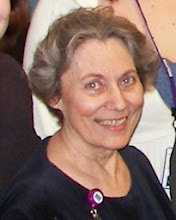[Ref: The Journal of Beatrix Potter from 1881 to
1897, Transcribed from Her Code Writing By Leslie Linder, Frederick Warne
& Co., New York, 1968, pp,
xxiii-xxix; illustrations see xxvi & xxvii.
The chart of code symbols in the above source is not included, as many
of them can not be reproduced by the letters available on a standard keyboard,
but if you can find a copy of the book, there is a chart on p. xxv.]
We tend to think of Beatrix Potter mostly as the author of
charming books about the adventures of little animals, such as The Tale of Peter Rabbit. However while looking up some journaling
information at the public library, I ran into this account of her journals, done
in secret code between the ages 14 to about 30.
The author, Leslie Linder, tells how she originally learned
about the journals. In 1952, during a
visit with Captain and Mrs. Stephanie Duke, a relative of BP, she relates the
circumstances. “As I was taking leave of
them at the railway station she turned to me saying, ‘Do you know that we have
just come across the most extraordinary collection of Papers,… a large bundle
of loose sheets and exercise books written in cipher-writing which we can make
nothing of – I wonder is you could
decipher them?.’ It was not until
several months later when I was at Hill Top that I first saw this mysterious
bundle of Papers which had been given to the National Trust to keep with their
other Beatrix Potter Papers.
I was able to
examine them in detail, but could find no clue to the cipher-symbols, apart
from the fact that they looked like ordinary letters of the alphabet, also the
figure 3 appeared very frequently. …
The following
year [c. 1953] when again visiting Hill Top, I was allowed to take away some of
the code-written sheets in order to study them at my leisure. … but the next
few years passed without any definite results, and all attempts to break down
the code failed. By Easter 1958 I was
beginning to think somewhat sadly that these code-written sheets would remain a
mystery forever.
On the evening of
Easter Monday, 1958, I remember thinking to myself, I will have one last attempt at solving this
code-writing, more to pass the time than with any anticipation of success.”
She selected a sheet at random. It happened to contain the letters XVI and what looked like the date 1793.
“I consulted a
Dictionary of Dates without success, and then, almost by chance, looked up
Louis XVI in the Index to the Children’s Encyclopedia, where I read, ‘Louis
XVI, French King; born Versailles
1754; guillotined Paris 1793’. Here at last was a possible clue!
It so happened
that this particular line of code-writing contained a word in which the second
cipher-symbol was the letter x, it
immediately suggested the word executed
as the equivalent of guillotined. …
and the clue was valid. … With the help of these assumed symbols, other words
were deciphered, and by midnight on that memorable Easter Monday practically
the whole of Beatrix Potter’s code-alphabet had been solved.”
“ … this collection of code-written sheets contained the
perfect clue – a page of note-paper headed XC. … The Roman numerals were, in fact, the
heading to verses 1-12 of the 90th Psalm [from the Bible]. Apart from two wrong words and three which
had been omitted, it was word perfect…and a simple and straightforward key to
the code.”
Although the key was available, the author explains that there
were still problems to solve. One was
that parts of the cipher symbols had faded over time, making it difficult to
decipher words. Second, while early
texts had upper case letters, this was abandoned in later texts. Third the code-alphabet was a mixture of Arabic
letters, Greek symbols, German script, and some imaginary letters. Fourth, some symbols could represent more
than one word. For example “2” could mean to, too, or two, and “3” could be the number 3 or the word “the” and would therefore appear several times on a page. Some compound words would have a shortened
compound symbol: “4get” might mean “forget”.
And fifth, at some times, two
symbols were combined to make a third word, with a totally different meaning.
Comparative authentication and checking was conducted to
determine certain contemporary information, such as political activities,
place-names, botanical names, natural history, geology, names of artists, and
titles of pictures mentioned. Research
was conducted to establish the chronology of events. The journal material shows an extremely broad
vocabulary and some editing done by Miss Potter herself.
The journals end on January
31, 1897, in which “she described in detail her preparation for a
Paper [on The Germination of the Spores
of Agaricinae] and the help and encouragement she received from her uncle
Sir Henry Roscoe, the distinguished chemist…. From now onwards the keeping of a
Journal appears to have been put on one side as Beatric Potter became more and
more absorbed in the planning of her books.
It is of interest to note, however, that in later years she sometimes
wrote odd notes and even fragments in code-writing, but it was never used again
for the purpose of a Journal.”

No comments:
Post a Comment